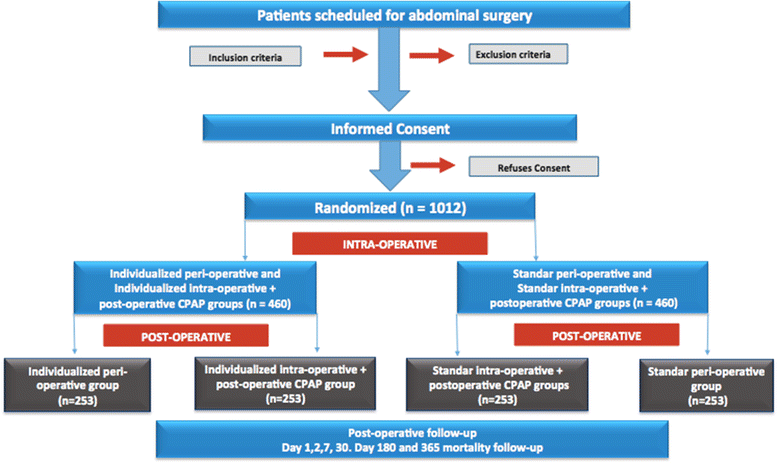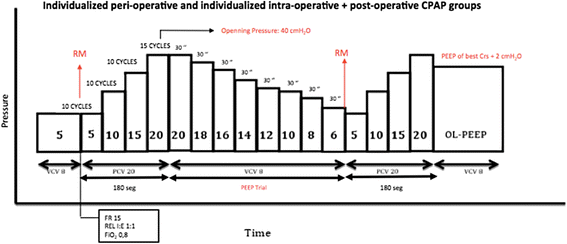Rationale and study design for an individualized perioperative open lung ventilatory strategy (iPROVE): study protocol for a randomized controlled trial
- PMID: 25927183
- PMCID: PMC4425893
- DOI: 10.1186/s13063-015-0694-1
Rationale and study design for an individualized perioperative open lung ventilatory strategy (iPROVE): study protocol for a randomized controlled trial
Abstract
Background: Postoperative pulmonary and non-pulmonary complications are common problems that increase morbidity and mortality in surgical patients, even though the incidence has decreased with the increased use of protective lung ventilation strategies. Previous trials have focused on standard strategies in the intraoperative or postoperative period, but without personalizing these strategies to suit the needs of each individual patient and without considering both these periods as a global perioperative lung-protective approach. The trial presented here aims at comparing postoperative complications when using an individualized ventilatory management strategy in the intraoperative and immediate postoperative periods with those when using a standard protective ventilation strategy in patients scheduled for major abdominal surgery.
Methods: This is a comparative, prospective, multicenter, randomized, and controlled, four-arm trial that will include 1012 patients with an intermediate or high risk for postoperative pulmonary complications. The patients will be divided into four groups: (1) individualized perioperative group: intra- and postoperative individualized strategy; (2) intraoperative individualized strategy + postoperative continuous positive airway pressure (CPAP); (3) intraoperative standard ventilation + postoperative CPAP; (4) intra- and postoperative standard strategy (conventional strategy). The primary outcome is a composite analysis of postoperative complications.
Discussion: The Individualized Perioperative Open-lung Ventilatory Strategy (iPROVE) is the first multicenter, randomized, and controlled trial to investigate whether an individualized perioperative approach prevents postoperative pulmonary complications.
Trial registration: Registered on 5 June 2014 with identification no. NCT02158923 .
Figures


References
Publication types
MeSH terms
Associated data
LinkOut - more resources
Full Text Sources
Other Literature Sources
Medical

